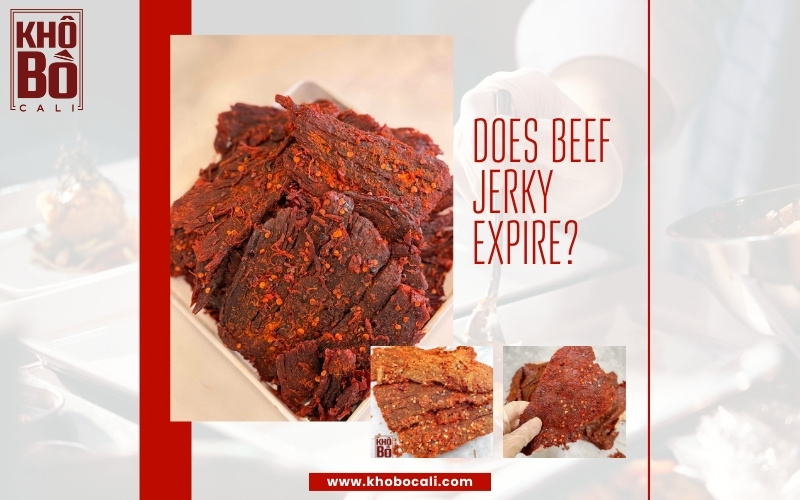Many people wonder: does beef jerky expire? The truth is, when beef jerky is carefully cooked, dehydrated, sealed, and stored under the right conditions, an unopened bag won’t suddenly go bad. Instead, its taste and texture will slowly lose freshness over time. The “best-by” date printed on the package is meant to guide you toward its peak flavor, not necessarily to mark the day it becomes unsafe. In fact, if stored properly, unopened beef jerky can still be eaten even after that date, though it may not deliver the same satisfying chew and rich flavor as when it’s fresh. Generally, commercial beef jerky is best enjoyed within a year for the most delicious experience.
Does beef jerky spoil?
Unlike highly perishable foods such as eggs, milk, cheese, or bread, beef jerky does not “spoil” in the same way. Instead of carrying a strict expiration date, jerky is typically labeled with a “best-by” date, which simply indicates the period when its flavor and texture are at their peak. This unique characteristic is one of the main reasons beef jerky has been cherished for centuries as a long-lasting, protein-rich snack that travelers, hikers, and even ancient civilizations relied on for nourishment during long journeys.
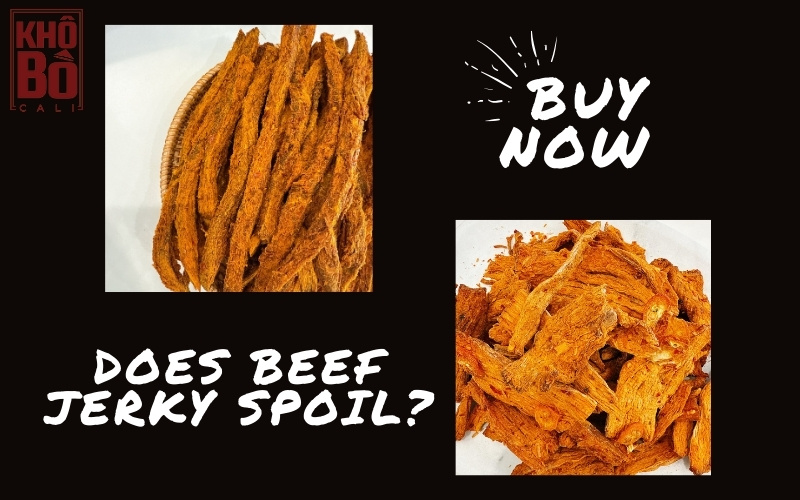
When prepared the right way, through thorough cooking, careful dehydration, proper packaging, and safe storage beef jerky can remain safe to eat for an extended time, far longer than most everyday foods. However, this doesn’t mean it’s completely immune to spoilage. Mistakes in the production process, such as insufficient dehydration or improper sealing, can cause moisture to linger, creating the perfect environment for mold growth or rancidity.
Fortunately, the signs of spoiled beef jerky are usually quite obvious. Discoloration, off-putting odors, changes in texture, or the presence of mold are clear indicators that the jerky should not be consumed. By checking these simple clues, you can easily determine whether your jerky is still good to enjoy or if it’s time to toss it out.
How to tell if beef jerky is still good?
Wondering whether your beef jerky is still safe to eat? The good news is, it doesn’t take much effort to figure it out. By following a few simple steps and trusting your senses, you can quickly tell if your jerky is fresh or past its prime.
-
Check the best-by date – While not a strict expiration date, it gives you a reliable guideline for peak flavor and quality.
-
Look at the packaging – If the seal is broken, the bag is puffed up, or there’s visible damage, air or moisture may have compromised the jerky.
-
Inspect the jerky itself – Discoloration, mold, or an unusual texture are clear red flags.
-
Use your senses – Sight, smell, and touch are your best tools. A sour or rancid odor, sticky surface, or odd appearance are strong signs that it’s time to throw it away.
At the end of the day, common sense is your most reliable guide. And if you’re still uncertain, don’t hesitate to reach out to a professional—or even contact our customer service team. Whether it’s our jerky or another brand, we’re always happy to help you make the safest choice.
Check the best-by date
Every package of beef jerky produced in the United States is required by law to display a clearly printed best-by date, usually found near the bottom seal of the bag. This date is your first and easiest reference point when evaluating whether the jerky is still good to eat. Essentially, it marks the manufacturer’s estimate of when the product will be at its peak flavor, texture, and overall quality.
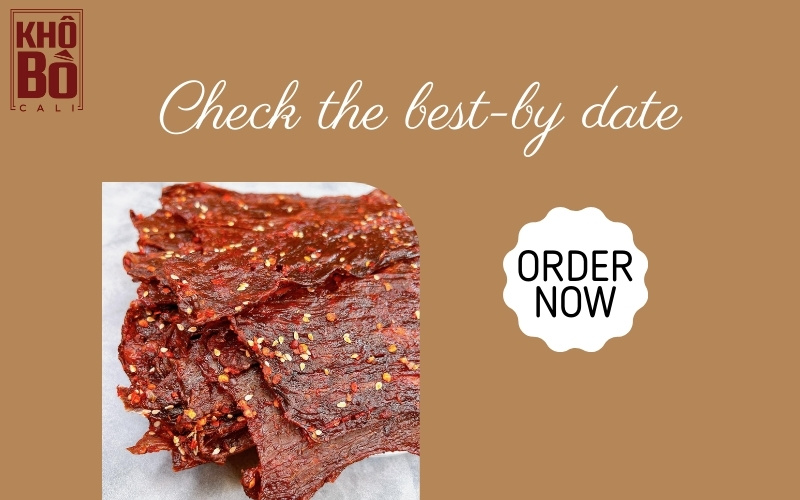
It’s important to understand, however, that a best-by date is not the same as a strict expiration date. Jerky that has been stored properly kept sealed, in a cool, dry place may still be safe to consume well beyond this printed date. The main difference is that after the best-by period, the jerky may start to lose some of its signature qualities, such as its savory aroma, chewy texture, or rich flavor. In other words, it won’t necessarily become unsafe, but it might not taste as satisfying as when it was fresh.
Examine the packaging carefully
Before even opening the bag, take a close look at its condition. Any visible rips, tears, pinholes, or an improper seal can be a sign that the packaging has been compromised. When this happens, oxygen and moisture may have slipped inside two of the biggest culprits that shorten jerky’s shelf life and create the perfect environment for mold or bacteria to grow.

While damaged packaging doesn’t automatically mean the jerky inside is spoiled, it should immediately raise a red flag. At the very least, compromised seals can cause the jerky to lose its chewy texture and bold flavor more quickly than expected. In more serious cases, it can lead to rancidity or visible mold spots. That’s why it’s always smart to treat damaged packaging as a warning sign and inspect the jerky inside even more carefully before deciding whether it’s safe to eat.
Inspect the jerky carefully
This is the most important step, because it’s where your senses sight, smell, and touch become your best tools for determining whether the jerky is still safe to enjoy.
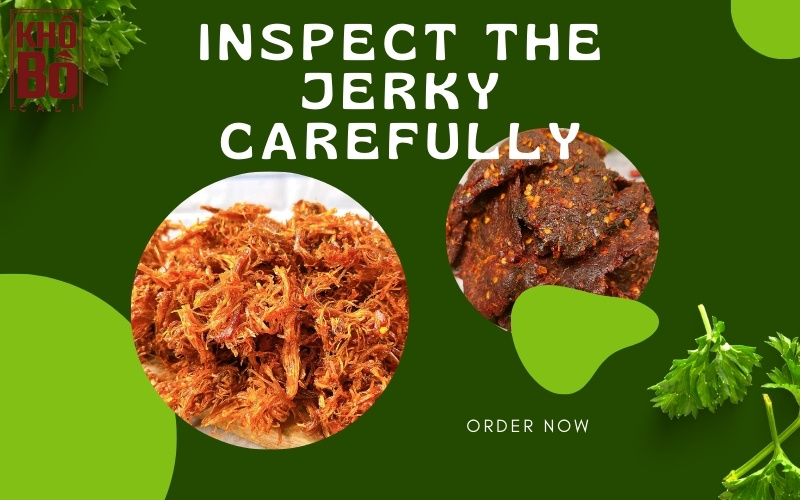
-
Appearance: Start by examining the color and overall look of the jerky. Fresh jerky should have a deep, rich brown hue with a slightly glossy surface. If you notice unusual discoloration, such as white patches, green spots, or areas that appear fuzzy, it’s time to be cautious. White specks could sometimes be crystallized salt or surfaced fat, which are harmless, but if the pattern resembles cobwebs or powdery growth, that’s a clear sign of mold. Mold typically appears in white, green, or gray tones and may spread in a spider-web fashion across the surface.
-
Smell: Next, take a whiff. Good beef jerky will have a savory, meaty aroma that makes you want to take a bite. If instead you detect a sour, spoiled, or rancid odor, that’s a strong indicator the jerky is no longer edible. Rancidity is more likely when jerky contains slightly higher fat content, since fat can spoil over time.
-
Texture and touch: Finally, feel the jerky in your hand. Proper jerky should be firm yet pliable chewy without being mushy or slimy. If it feels unusually soft, sticky, or greasy, that may point to contamination or spoilage.
Ultimately, there are two undeniable signs that beef jerky has gone bad: visible mold growth or a rancid smell. If you encounter either of these, don’t take chances. It’s always safer to discard the jerky rather than risk your health. Remember, beef jerky is designed to last a long time, but no food is immune to spoilage under the wrong conditions.
When in doubt, consult a professional
If your beef jerky has passed the first three checks best-by date, packaging condition, and sensory inspection and shows no signs of mold, rancidity, or unusual texture, it’s generally considered safe to eat. Most of the time, trusting your eyes, nose, and common sense will give you a reliable answer.

That said, food safety is not something to take lightly. If you’re still uncertain after doing your own inspection, it’s always better to err on the side of caution. Reach out to a food safety expert, a nutritionist, or even contact the manufacturer directly for guidance. Many companies, including ours, have customer service teams that are more than happy to answer questions about storage, shelf life, and whether your jerky is still good to consume.
Remember: no snack, no matter how tasty, is worth the risk of foodborne illness. When in doubt, seek professional advice or simply discard the jerky and replace it with a fresh bag to ensure both safety and flavor.
Why does beef jerky last so long?
One of the biggest reasons beef jerky is such a popular snack is its impressive shelf life. Unlike fresh cuts of meat, jerky undergoes a unique preservation process that allows it to remain safe and flavorful for months even without refrigeration. The key lies in removing nearly all of the moisture during the dehydration stage. Since bacteria and mold require water to grow, the absence of moisture creates an environment where spoilage is far less likely to occur.
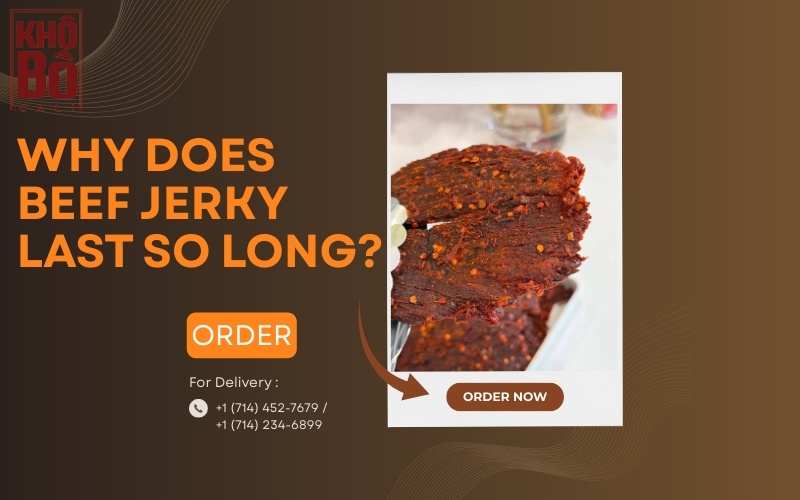
In addition to dehydration, jerky is typically packaged in airtight, vacuum-sealed bags. This prevents oxygen and humidity from creeping in, which are the two major culprits behind food spoilage. When you combine a low-moisture product with secure packaging, you essentially create a snack that’s designed for longevity.
That’s also why you’ll see a “best-by” date on beef jerky packages rather than a hard expiration date. The best-by date indicates when the jerky will taste its freshest and have the best texture, but it doesn’t mean the product instantly becomes unsafe after that point. As long as it’s been properly prepared, sealed, and stored in a cool, dry place, beef jerky doesn’t truly expire in the traditional sense it simply loses some of its original flavor and chewiness over time.
How to store beef jerky for maximum shelf life
If you want your beef jerky to stay fresh, flavorful, and safe to eat for as long as possible, proper storage is absolutely essential. Luckily, keeping jerky in peak condition isn’t complicated just a matter of following a few simple guidelines.
Here are six key steps to extend the shelf life of your beef jerky:
-
Maintain a steady temperature – Store jerky in a cool, dry place. Fluctuating temperatures can cause condensation inside the package, which may lead to mold.
-
Avoid moisture at all costs – Jerky’s long shelf life comes from being dehydrated. Any exposure to humidity or water can quickly ruin its texture and safety.
-
Keep it away from sunlight – Direct sun can heat the package and affect both flavor and quality. A dark pantry or cupboard is best.
-
Use the original packaging – Most jerky comes vacuum-sealed or in resealable bags designed to preserve freshness. Keep it sealed until you’re ready to snack.
-
Freeze only when necessary – While freezing can extend shelf life, it may alter texture. Freeze jerky only if you won’t be eating it for several months.
-
Choose high-quality jerky – Buying from trusted brands ensures that the jerky was properly dehydrated, packaged, and prepared for long-term storage right from the start.
By following these steps, you’ll keep your jerky tasting as delicious as the day you bought it chewy, savory, and ready whenever you need a protein-packed snack.
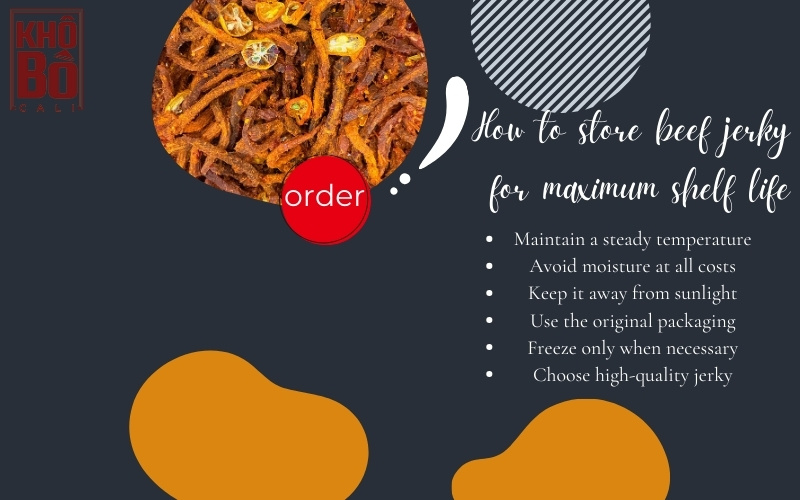
Store in a cool, stable environment
Beef jerky thrives best at room temperature, where it’s not exposed to extremes of heat or cold. Think of it as the “Goldilocks snack” conditions need to be just right. The back of a pantry, a cupboard, or a drawer away from appliances like ovens, stoves, or microwaves are ideal spots. Avoid areas that heat up or cool down often, as temperature fluctuations can shorten the jerky’s shelf life.
Keep it dry at all times
Even though jerky comes sealed in protective packaging, tiny amounts of oxygen and moisture can still pass through the barrier over time. That’s why keeping it in a dry location is so important. High-humidity environments, especially in tropical or coastal regions, can cause condensation on the packaging sometimes referred to as “sweating.” This excess moisture can speed up spoilage, alter texture, and even invite mold.
Protect it from sunlight
Direct sunlight and strong artificial light are enemies of beef jerky. Exposure to UV rays can accelerate the breakdown of fats and proteins, leading to a noticeable decline in taste, aroma, and nutritional quality. Always store jerky in a shaded place where it won’t be exposed to bright or direct light.
Limit oxygen exposure
The original vacuum-sealed or resealable packaging is designed to keep oxygen out and freshness in. Once opened, jerky should be consumed relatively quickly. If you don’t plan on finishing it right away, reseal the bag tightly or transfer the jerky to an airtight container to reduce oxygen exposure.
Freeze only when necessary
Freezing is an option if you need to extend storage for several months, but it should be treated as a last resort. While the cold will keep bacteria at bay, it can also compromise what makes jerky enjoyable its chewy texture, savory flavor, and even some nutritional value. If you do freeze jerky, let it thaw naturally before eating for the best results.
Choose trusted brands and quality sources
The foundation of long-lasting jerky begins with how it’s made. Buying from reputable producers ensures the product has been properly cooked, dehydrated, and packaged to meet safety standards. High-quality jerky not only tastes better but also lasts longer when stored correctly.
By following these practices, you’ll maximize both the safety and enjoyment of your jerky, ensuring every bite remains as delicious as intended.
How long does beef jerky last once opened?
The shelf life of beef jerky after opening depends heavily on its style and how it’s stored. Generally, moist-style jerky (which is softer and less dehydrated) should be eaten within about three days if left unrefrigerated, as its higher water content makes it more vulnerable to spoilage. On the other hand, drier-style jerky which has been more thoroughly dehydrated can last much longer, sometimes even indefinitely, provided it is kept in the right conditions.
The key to jerky’s longevity lies in two factors: moisture and oxygen. When jerky is first made, most of the natural moisture is removed through drying, and then the product is sealed in airtight packaging to minimize oxygen exposure. These two steps create a hostile environment for bacteria, mold, and other spoilage agents, which is why sealed jerky can last such a long time.
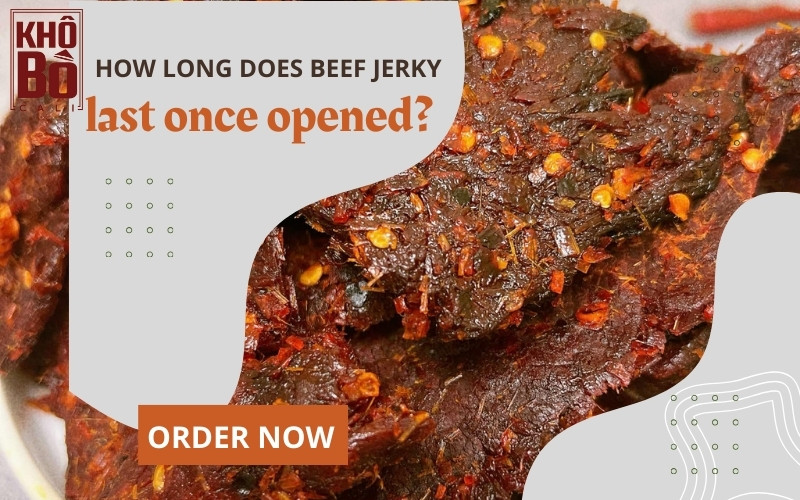
However, once you break that seal, you reintroduce jerky to its two biggest enemies air and humidity. Oxygen speeds up the process of rancidity, especially if the jerky contains fat, while moisture can encourage mold growth. That’s why it’s crucial to store leftover jerky properly after opening.
To extend freshness, always reseal opened jerky in an airtight bag or container. Better yet, squeeze out as much excess air as possible before sealing. Then, place it in a cool, dark, and dry location such as a pantry, cupboard, or even the refrigerator if you live in a humid climate. With these precautions, drier jerky can last for weeks or even months, retaining much of its flavor and texture. In short, proper storage is the difference between jerky that spoils quickly and jerky that remains a safe, protein-packed snack for a long time.
Is beef jerky good for survival?
Absolutely—beef jerky has long been recognized as one of the best survival foods you can carry. Unlike many perishable items, it doesn’t require refrigeration, cooking, or any special preparation. Thanks to its low moisture content, long shelf life, and high protein density, beef jerky provides the perfect balance of nutrition and convenience during emergencies. That’s why you’ll often find it included in serious survival kits, hiking packs, and military rations. When food options are limited, jerky is a reliable source of energy and sustenance you can count on.
How long does homemade beef jerky last?
While homemade beef jerky is delicious and safe to make, its shelf life is considerably shorter than store-bought jerky. On average, homemade versions last only about 1 to 2 months, even under proper storage conditions. The difference comes down to processing. Commercial jerky is made using strict food safety standards, advanced dehydration equipment, and vacuum-sealed packaging that protects it from oxygen and moisture. Homemade jerky, on the other hand, doesn’t typically go through the same rigorous process, which means it won’t stay fresh as long. Still, when consumed within its window, it can be just as tasty and nutritious as the store-bought kind.
Bottom line
Beef jerky has been treasured for centuries, from pioneers traveling across untamed lands to modern-day backpackers trekking through rugged trails. Its enduring popularity comes down to one simple secret: shelf life. Jerky is a food you can depend on it lasts a long time, fuels your body, and tastes great along the way.
Of course, not all beef jerky is created equal. To enjoy the highest quality delicious flavor and guaranteed safety, you need to choose a trusted brand. Khô bò CALI is proud to be a name trusted by countless customers, thanks to our meticulous production process, signature seasoning recipe, and carefully selected ingredients. Every piece of our jerky delivers rich flavor, perfect chewiness, and complete peace of mind for your health.
Whether you’re stocking up for long trips, preparing for emergencies, or simply looking for a tasty everyday snack, Khô bò CALI is your reliable and enduring companion.

